
If you need to reset your Edexcel Online (EOL) password (for example, there is a mandatory password reset, or you haven't logged into EOL for a while - we lock accounts after 18 months of inactivity - or you've forgotten your password), you'll need to follow these steps from the Edexcel Online login page.
Please click each section to expand and view support:
Technical requirements before attempting a password re-set
|
Please check that the following websites have been allowed within your centre network/firewalls. You may require support from your centre's IT or network administrator to ensure that the following URLS on their safelist:
Your IT department must also ensure that the following ports are set to 'open' for the above sites:
|
|
Password reset steps
|
1. Click on the 'Forgot password?' link:
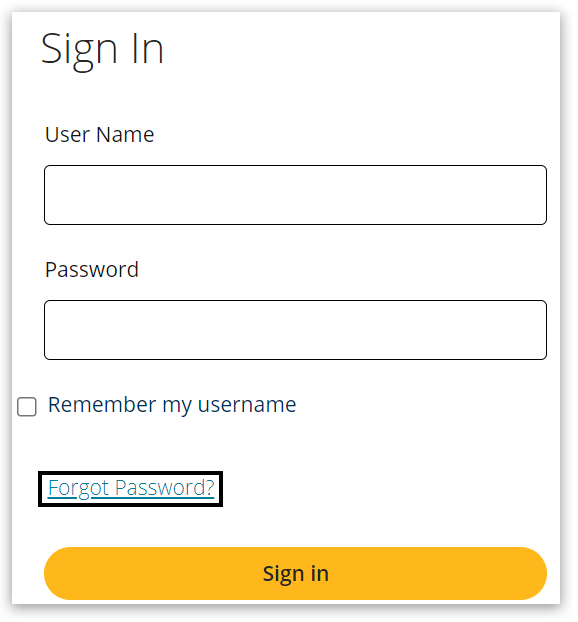
2. On the forgotten password screen, enter your EOL username. This is the email address used to create your account. If you're not sure which one was used or if it has changed, please ask your Exams Officer/Centre Administrator to confirm it for you, then click 'Submit':
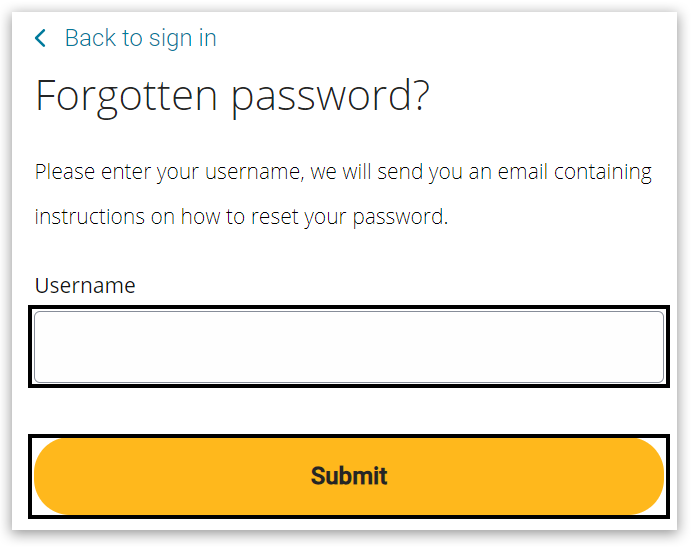
3. You will see a message advising that we have sent you an email to complete the password reset process:
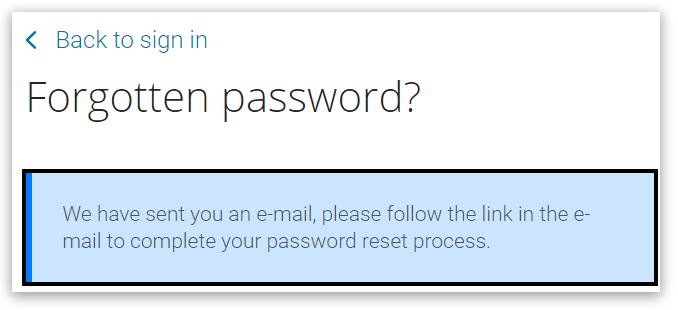
4. Open the email, click on the 'Reset' link, and you'll be asked to choose a new password; this password needs to be between 8 and 15 characters in length and contain at least 1 number:
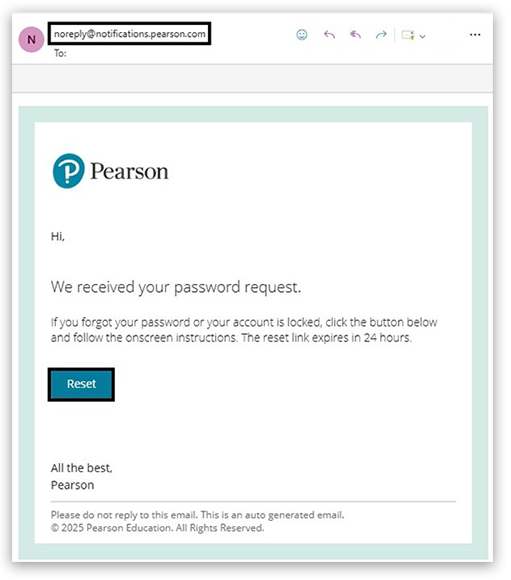
Please note: This e-mail will come from noreply@notifications.pearson.com. If you do not receive anything within 5 minutes, please check these points:
- Did you enter the correct e-mail address in the username field?
- Has our e-mail been intercepted by a junk/spam mail filter? – Please ask your IT department to check for any messages sent from noreply@notifications.pearson.com,
Your password must be changed within 24 hours of receiving the email. Please repeat the above steps to request a new link if this window is missed.
Upon a successful reset, you will see the following message, click 'Continue':
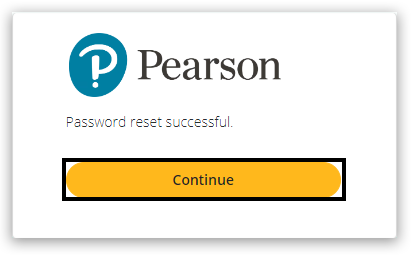 |
|
Password guidance
|
We have introduced password strengthening measures on the Pearson portal, and the systems accessed through the portal, including Edexcel Online.
The mandatory requirements that have come into effect and will remain in place are passwords:
- must contain a minimum of 8 characters
- must contain at least one numerical character
- must contain a mixture of upper and lower case
- must not be a match for one of the flagged 'bad passwords'. (these are common passwords or passwords that have already been flagged as being used in a data breach)
- Use special characters randomly throughout your password - This is an effective way of ensuring a secure password. Currently the Pearson Portal allows use of the following special characters:
| ~ (Tilde) | ` (Backtick) | ! (Exclamation mark) | @ (At sign) | # (Hash or Pound sign) | $ (Dollar sign) | | % (Percent sign) | ^ (Caret) | & (Ampersand) | * (Asterisk) | ( (Open parenthesis) | ) (Close parenthesis) | | _ (Underscore) | - (Hyphen or Minus) | + (Plus sign) | = (Equals sign) | { (Open brace) | } (Close brace) | | [ (Open bracket) | ] (Close bracket) | | (Vertical bar or Pipe) | \ (Backslash) | / (Forward slash) | : (Colon) | | ; (Semicolon) | " (Double quote) | ' (Single quote or Apostrophe) | < (Less than sign) | > (Greater than sign) | , (Comma) | | . (Period or Dot) | ? (Question mark) |
- Don't re-use passwords - We know our customers work with multiple AOs and will be required to remember multiple login details for secure portals. It is not recommended that you use the same password across multiple platforms. If one system is compromised, it is possible that they could fall victim of hackers.
- Don't use personal information - This will often be the first thing that a malicious entity would try.
- The National Cyber Security Centre(NCSC) recommend using 'three random words' which allows passwords to be long enough and strong enough. We understand that using three random words alone wouldn't meet all of the password requirements for the Pearson portal, so in conjunction with this we could also suggest to customers that they swap out certain letters for numbers i.e. a 3 instead of an E, an 8 instead of B etc.
- We will never suggest full passwords for our customers to use, as these need to be confidential. We will also never ask customers to share a password with us as part of any troubleshooting.
Please Note: If you have entered a password that has been matched to one of the most commonly used on the internet for additional security, you will see the below message and be asked to choose another:
 |
|
Logging into EOL accounts using multi-factor authentication (MFA)
|
We have now introduced additional security to Edexcel Online, using Multi-factor authentication (MFA). This is an additional measure to protect user, centre and learner data. For detailed information, including downloading the app to your mobile device and using it to complete the sign-in process. Please see Pearson Portal Authenticator for details.
Please Note: With the introduction of MFA to EOL, all centres can only have one user per Edexcel Online account; hence, with additional security measures Pearson has in place, it will supersede JCQ ICE regulation 4.4, which states, "Email accounts used for secure material access must belong to named individuals or be a group email account accessed solely by individuals authorised by the head of centre to handle secure materials."
Please note: In all cases, only the account holder should have access to their online account. Under no circumstances should any other person log in to your account, and your log in details should never be shared. Failure to comply with these rules could result in a data breach which could constitute a breach of the terms and conditions of Pearson centre approval.
|
|
Back to Pearson English International Certificate (PEIC): Administration index page.



